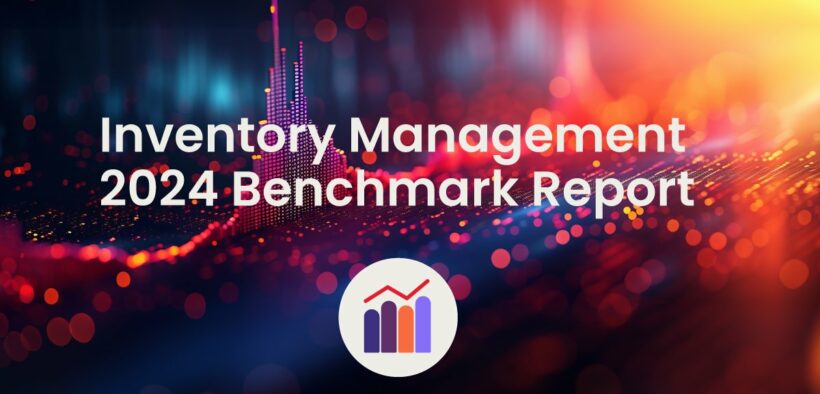Top Trends from the Netstock’s Inventory Management 2024 Benchmark Report
Share

The Netstock Inventory Management 2024 Benchmark Report is a groundbreaking resource that offers crucial insights into key trends and industry benchmarks.
This report combines anonymous data from over 2,400 Netstock customers with in-depth survey feedback from more than 300 users. It provides a comprehensive look at global inventory management practices, covering critical areas like stock movement, supplier reliability, excess inventory, and AI adoption.
The report isn’t just about data—it’s about giving you the tools to make informed decisions, optimise inventory, and boost your business’s efficiency. By understanding these trends, you’ll be better equipped to navigate challenges, reduce costs, and stay ahead in 2024 and beyond.
Key trends and findings:
State of the industry: Reduced inventory holdings
The past year has shown promising advancements in inventory management. SMBs globally have reduced their inventory holdings by 9% year-over-year since early 2023, demonstrating improved operational efficiency. This trend is even more pronounced in North America and Africa, where inventory levels have dropped by 10%. In Australasia, the reduction stands at 6%, while Europe and the UK have seen a 4% decrease.
Supplier reliability: A persistent challenge
Supplier reliability remains a significant challenge for SMBs, with 72% citing inconsistent delivery times as a major issue. This problem is particularly acute for companies sourcing from China, though sea freight is often more reliable than land and air transport.
Navigating these reliability issues requires robust supply chain planning and the ability to adapt quickly to changing circumstances. Investing in predictive supply chain planning tools can provide the visibility and resilience needed to manage these challenges effectively.
The rise of nearshoring
A notable trend highlighted in the report is the shift towards nearshoring. American SMBs are increasingly turning to domestic suppliers, with only 25% now preferring offshore sources. This shift highlights the growing need for enhanced visibility and resilience in supply chains. Nearshoring not only reduces dependency on distant suppliers but also mitigates the risks associated with long lead times and variable delivery times.
For businesses considering this shift, the investment in advanced demand and supply planning tools becomes even more critical. These tools can help predict potential disruptions, optimise inventory levels, and ensure a more stable and reliable supply chain.
The excess problem: A common struggle
Excess stock remains a significant issue for SMBs, accounting for 38% of inventory on average. This problem is not limited to smaller companies; larger SMBs are also grappling with high levels of overstocking. The report suggests that this is a clear indication of difficulties in inventory optimisation across the board.
Addressing the excess stock issue requires a multifaceted approach. Businesses need to focus on accurate demand forecasting, efficient inventory management, and the strategic use of technology to minimise excess and ensure that stock levels are aligned with actual demand.
Financing Inventory: A Balancing Act
Financing inventory is crucial for supply chain management. The report reveals that over half of SMBs use cash (54%) for inventory, while high interest rates challenge this approach. Retail businesses are notably reliant on credit, with nearly two-thirds (64%) using it to navigate seasonal sales fluctuations. Balancing cash and credit financing is essential for maintaining optimal inventory levels and ensuring profitability.
Investing in AI: A missed opportunity?
Despite AI’s growing accessibility, only 23% of SMBs have adopted this technology. The report highlights significant barriers, such as data integrity and security concerns, that are preventing wider adoption. However, the potential benefits of AI in forecasting, inventory optimisation, and demand planning are immense.
Benchmarking tools: identifying areas for improvement
The report includes benchmarking tools that allow businesses to compare their performance against industry standards. These tools enable companies to pinpoint areas for improvement and foster innovation, ensuring they remain competitive and efficient in their operations.
Why this report matters
By understanding industry trends and benchmarks, businesses can optimise their inventory processes, reduce costs, and increase efficiency. Leveraging insights from this report allows SMBs to enhance inventory practices, manage lead times more effectively, and proactively address challenges. Additionally, comparing performance against industry benchmarks helps businesses measure their standing, identify areas for improvement, and set realistic goals, which is crucial for maintaining competitiveness and ensuring long-term growth.
Dive deeper into the insights
As leaders in demand and supply planning, Netstock’s Inventory Management 2024 Benchmark Report is packed with detailed data, expert analysis, and practical recommendations. Read the report today to equip your business with the insights needed to thrive in 2024 and beyond.















